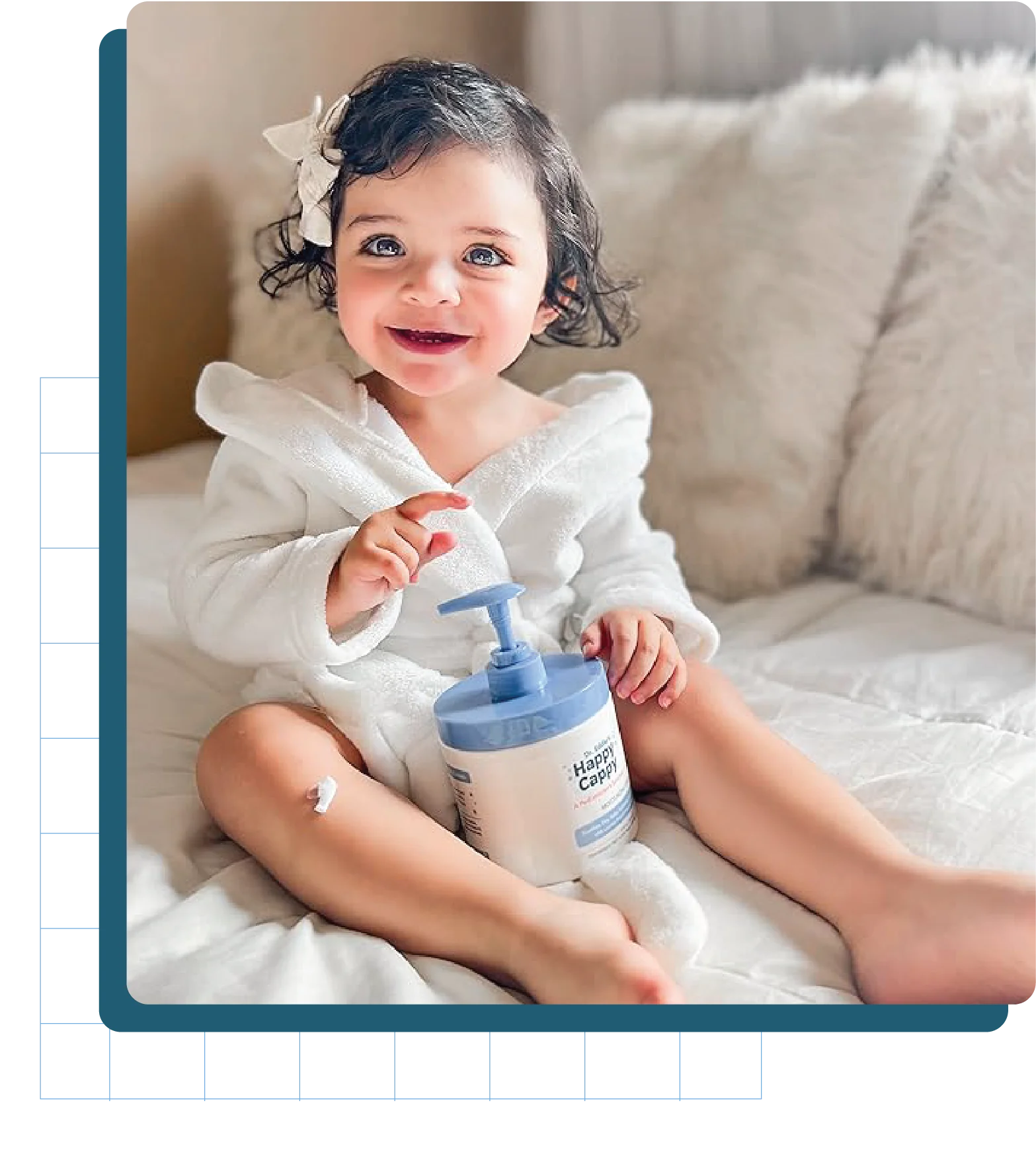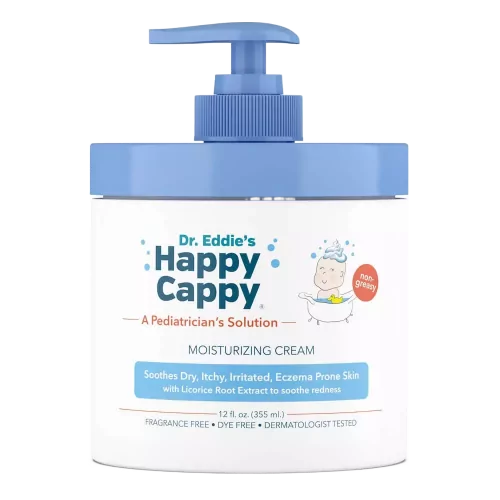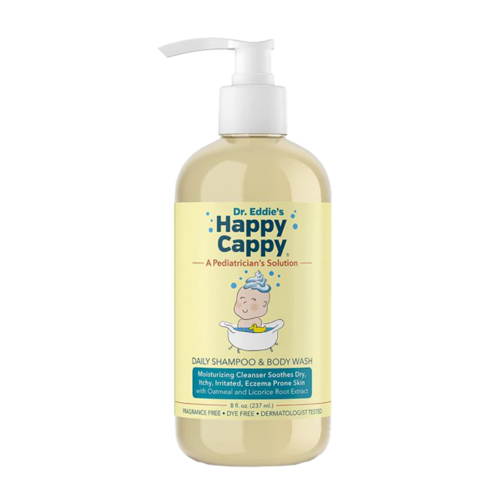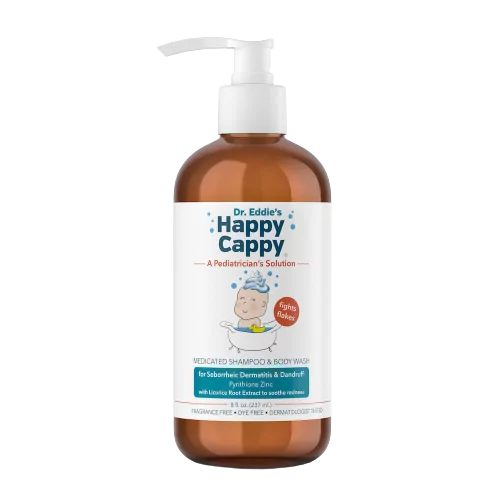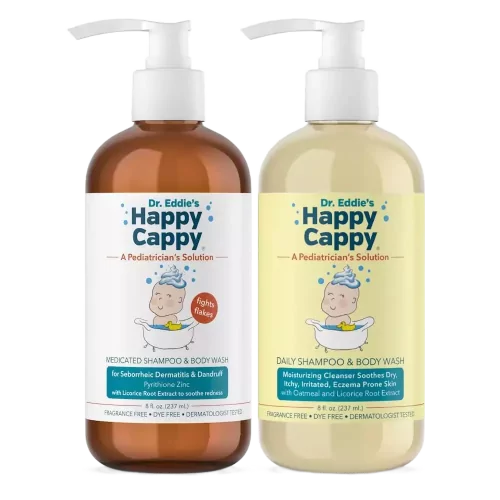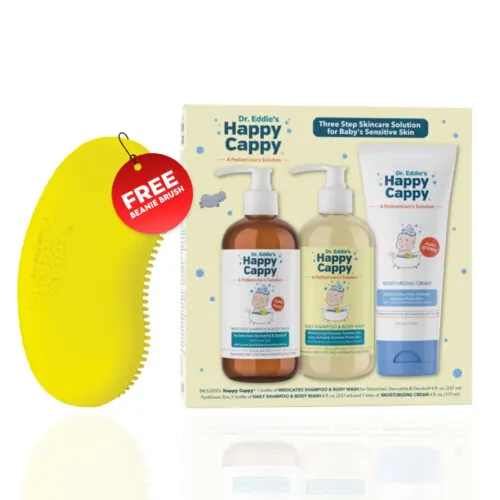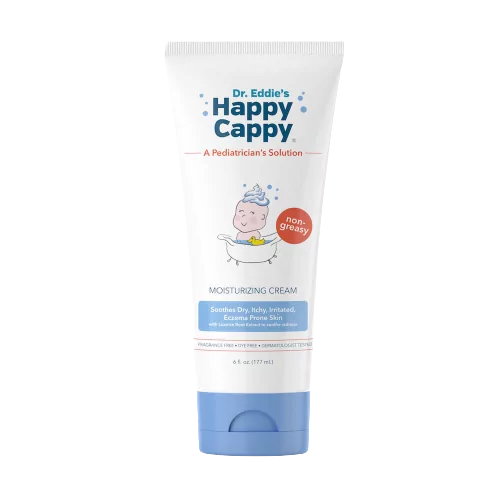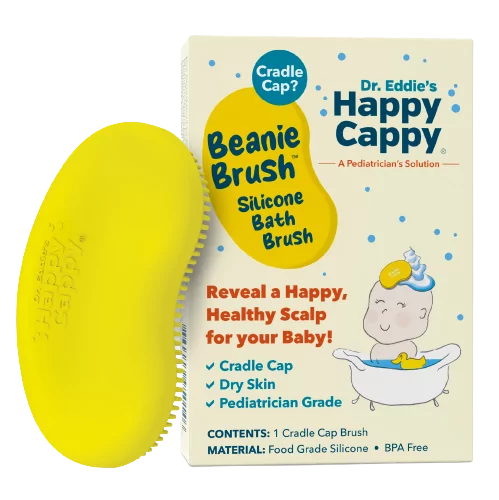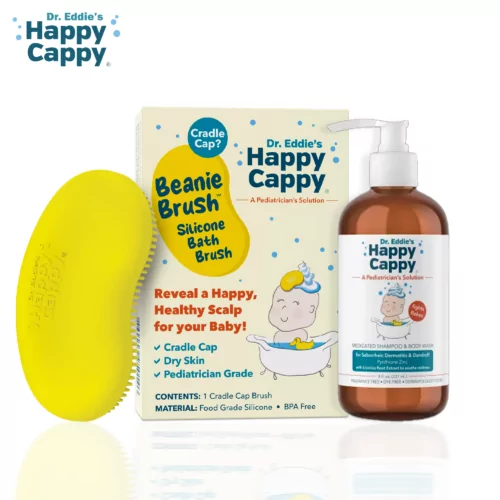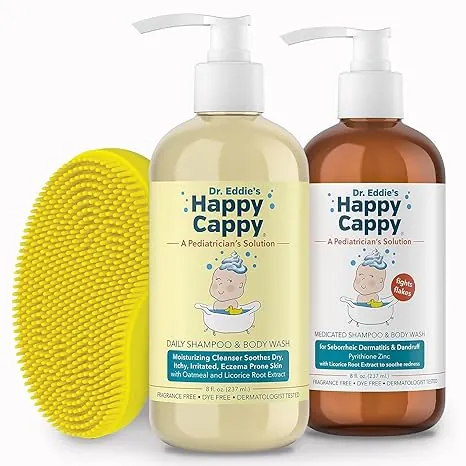No products in the cart.
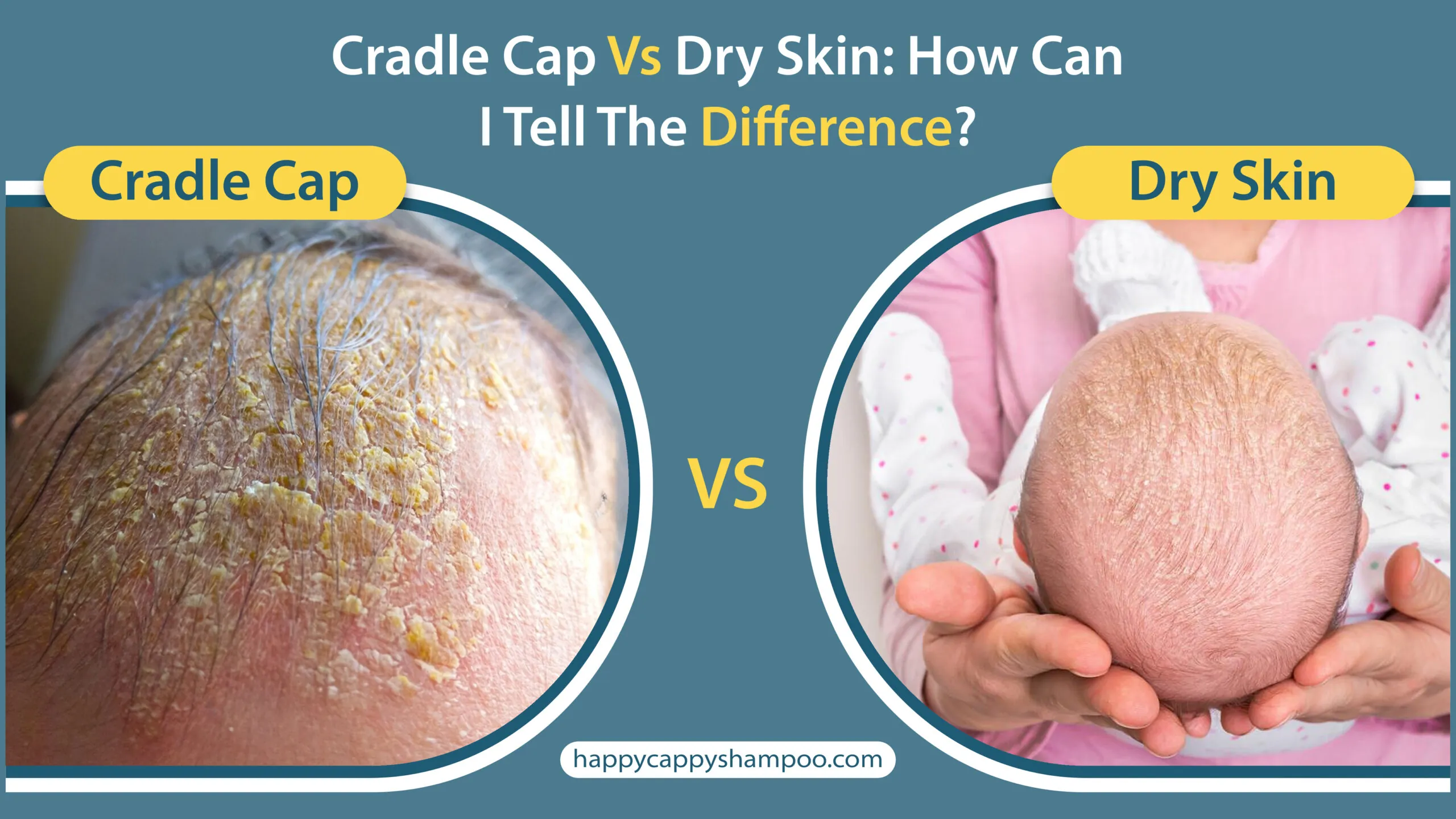
You are bathing your little bundle of joy, and you suddenly notice crusty, flaky skin on their scalp, and you start wondering, “Is it dry skin? Is it cradle cap? Is it dandruff? Or is it something else? “
Dry skin and cradle cap often cause similar symptoms, such as flaky, scaly skin patches, which is why it can be difficult to tell them apart. But don’t worry, Dr Eddie is here to the rescue.
In this blog, we will help you understand the difference between cradle cap vs dry skin, their
- Symptoms
- Causes
- Treatment
Understanding Dry Skin vs Cradle Cap
What Is Cradle Cap?
People often wonder, “Is cradle cap dry skin
According to Medical News Today, it affects about 70% of the babies at the age of 3 months and 10% at the age of 1 month. Cradle cap is not harmful or contagious and usually resolves before the baby’s first birthday with proper care.
What is Dry Skin?
Dry skin, medically known as xeroderma or xerosis, is one of the most common skin conditions people experience worldwide. It is caused by a lack of moisture in the skin and leads to dryness, roughness, itching, and flaking of the skin.
It is even more common in babies because their skin is still developing, is delicate, and sensitive. The dryness can lead to skin flaking and cracking. Making it difficult for you to distinguish it from other common skin conditions like eczema, psoriasis, and cradle cap.
Symptoms of Cradle Cap and Dry Skin
| Cradle Cap Symptoms | Dry Skin Symptoms |
Some common symptoms of cradle cap that you may notice on your baby’s scalp and skin are:
Even though cradle cap usually appears on the scalp and forehead, it can also cause redness and irritation.
| Some common symptoms of dry skin in babies are:
These symptoms may vary depending on the severity of the condition. The discoloration of skin depends on your baby’s skin tone.
|
Causes of Cradle Cap and Dry Skin
What Causes Cradle Cap?
If you are wondering, “Why do babies get cradle cap
- Babies under the age of 1 year experience hormonal changes in their bodies after birth. These changes can trigger the sebaceous glands to produce excess sebum.
- The presence of excess sebum on the skin provides a breeding ground and leads to the overgrowth of Malassezia yeast.
- When this yeast and sebum combine, they create a byproduct that causes a reaction on the skin and leads to inflammation, redness, and scaling associated with seborrheic dermatitis or cradle cap.
What Causes Dry Skin
Dry skin is caused when the skin is lacking the essential moisture to keep it hydrated. However, there are various factors that can trigger dry skin, such as:
- Extreme weather conditions
- Fragrances
- Chemicals in baby skin products
- Genetics
- Sun exposure
- Dehydration
- Excessive washing
- Dry air
Even though it is difficult to pinpoint what might be causing the dry skin, you can improve it at home by keeping your skin moisturized with a hypoallergenic dry skin moisturizer
Cradle Cap VS Dry Skin Pictures
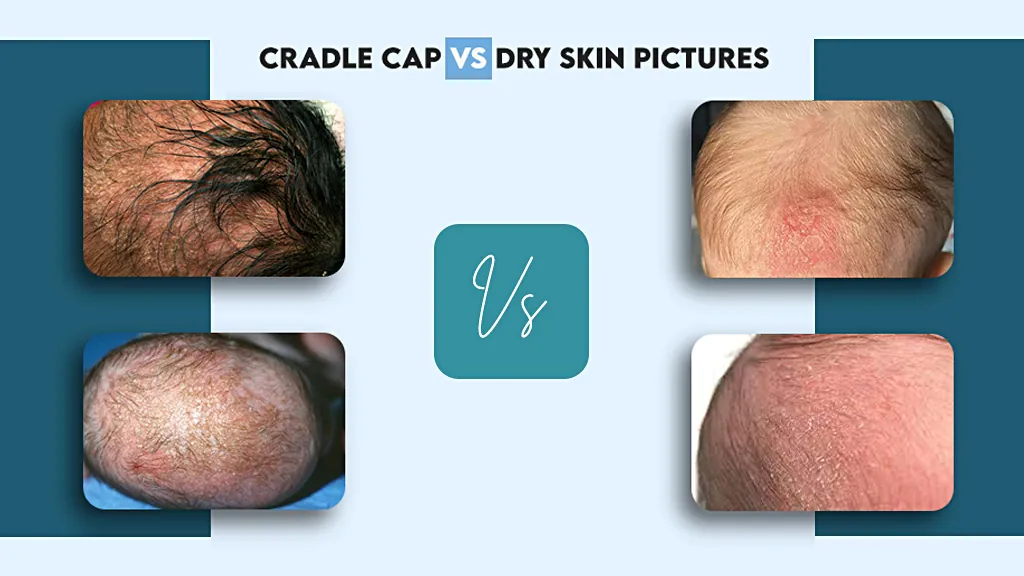
If you are thinking, “What does cradle cap look like? or What does dry skin look like?” these pictures may help you identify them.
Difference Between Dry Skin and Cradle Cap?
Here are the key differences between cradle cap and dry skin.
| Dry Skin | Cradle Cap | |
| Texture of Skin | Dry, rough, or cracked | Oily or crusty to the touch |
| Appearance | Dry, tiny, white flakes | Thick, greasy yellow or white flakes and scales |
| Causes | Lack of moisture in the skin | Excess sebum and overgrowth of malassezia yeast |
| Itching | Intense itching | Rare and is usually mild |
| Other symptoms | Flaking, redness, and discomfort | Greasy skin, irritation, and redness on the skin |
| Treatment | Daily cleansing and moisturizing | Crade cap shampoo and brush |
Treating Cradle Cap vs Dry Skin
Both cradle cap and dry skin can usually be treated at home. However, if you notice that the condition is getting worse even after proper care and attention, it is best to consult a dermatologist.
How to Get Rid of Cradle Cap?
Your cradle cap treatment should focus on two essential things:
- Using a Cradle Cap Shampoo
Use a medicated shampoo for cradle cap 2 to 3 times a week or daily when the scaling is severe. Cleaning the scalp with a specially formulated cradle cap shampoo for a baby’s sensitive skin can help reduce scaling, redness, and irritation.
- Using a Cradle Cap Brush
While shampooing, consider the use of a cradle cap brush to massage the scalp in soft circular motions gently. It can help you remove loose scales and prevent future buildup.
How to Get Rid of Dry Skin?
If you have a 2 month old with dry scalp and you are thinking “how to treat dry scalp on baby?” here are a few things that will not only help your baby but people of all ages with dry skin and scalp.
- Cleansing
Cleaning the skin with a gentle daily shampoo and body wash once daily that is free from any harsh chemicals and instead contains skin-hydrating natural ingredients like licorice root extract, apple fruit extract, oat extract, and aloe vera extract will help soothe the irritated skin.
- Moisturizing
The next step in the skincare routine should be to moisturize the baby’s skin at least 2 to 3 times daily with a baby moisturizing cream.
A common question often asked by people dealing with dry skin is “What is a good moisturizer for dry skin
Preventing Cradle Cap and Dry Skin
How to Prevent Cradle Cap?
The truth is, you can not entirely prevent cradle cap; however, here are a few things that you can do to prevent cradle cap scaling and flaking from becoming worse.
- Use a mild shampoo for cradle cap to wash your baby’s skin and scalp at least twice a week, even after a reduction in flaking.
- Brush the baby’s scalp regularly to promote blood flow, relaxation, and prevent flaking.
- Never use coconut oil for cradle cap or any other natural remedy on the baby’s sensitive skin without consulting the doctor.
- Even if you are applying any oil to the baby’s skin, make sure not to leave it on for a long period and remove it properly by cleansing the scalp.
How to Prevent Dry Skin?
Apart from following a proper skincare routine, here are a few more things that you should keep in mind to prevent dry skin.
- Bathe your baby regularly to keep their skin clean.
- Keep the bath time short, under 10 minutes.
- Use lukewarm water instead of hot water to wash the skin.
- Choose skincare products that are free from fragrances, parabens, phthalates, and sulfates.
- Keep the skin moisturized as much as possible.
- Use a humidifier if you suspect the air inside the room is getting dry.
- Protect the skin from direct sunlight by covering it or using a sunscreen.
- Make sure that you leave no shampoo or body wash residue behind on the skin after a bath.
- Pat the skin instead of rubbing it.
Keeping Skin Healthy with Happy Cappy
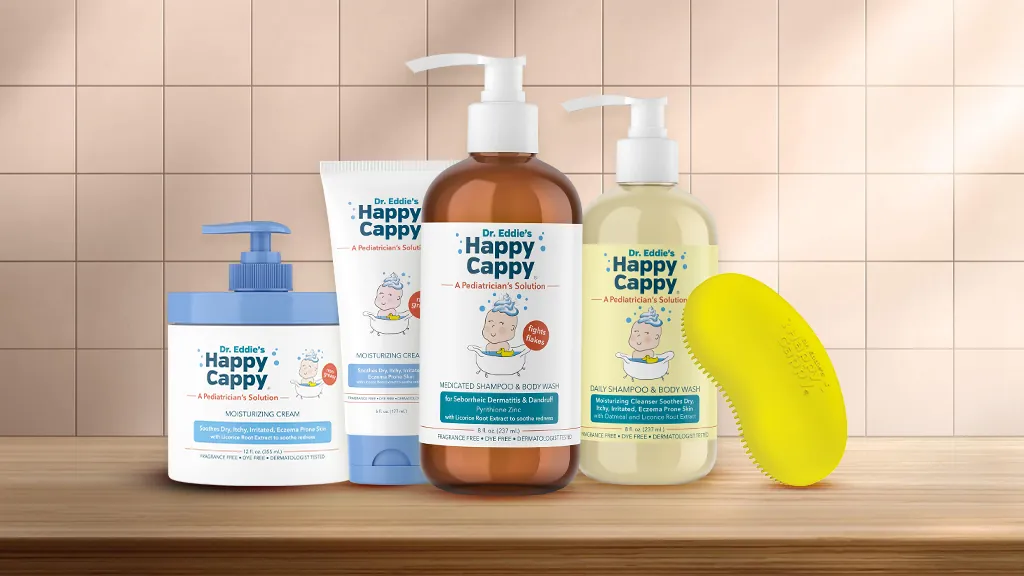
Both of these skin and scalp conditions are very common, especially in babies. But luckily, they’re both manageable at home with pediatrician-created and dermatologist-tested products like Happy Cappy products.
- Happy Cappy Medicated Shampoo and Body Wash with 0.95% pyrithione zinc as an active ingredient can help reduce the flaking, scaling, and redness associated with cradle cap and seborrheic dermatitis.
- Happy Cappy Daily Shampoo and Body Wash can be used daily to keep the skin clean and hydrated, dry, sensitive, and eczema-prone skin.
- Happy Cappy Moisturizing Cream can help moisturize and soothe dry, red, itchy, irritated skin in people of all ages.
Key Takeaways
- Dry skin and cradle cap are two very common skin conditions in babies.
- Both conditions can cause similar symptoms such as redness, irritation, flaking, and scaling, which may make it difficult for you to distinguish between them.
- However, the flakes caused by dry skin are white in color and are of a small size. The skin will also feel dry to the touch.
- But if your baby has a cradle cap, the scales will be thicker, bigger, and oilier than those with dry scalps.
- You can manage both conditions at home. Use an OTC cradle cap shampoo to get rid of flaking, scaling, and redness associated with seborrheic dermatitis.
- And for dry skin, use a daily shampoo to keep the skin clean, and baby cream to moisturize the skin.
FAQs
Latest posts by Dr. Eddie Valenzuela (see all)
- WhatToExpect Mentioned Happy Cappy Shampoo as the Best Medicated Shampoo For Cradle Cap - September 29, 2025
- Parents.com Mentioned Happy Cappy Shampoo in the List of 10 Best Shampoos for Babies and Kids of All Hair Types - September 29, 2025
- Chain Drug Review Covers Happy Cappy’s CVS Launch Nationwide - August 27, 2025
How to tell if it's cradle cap or dry skin?
The best way to tell both conditions apart is by touching. If the flakes feel greasy and are thick and sticky, then your baby is experiencing cradle cap. If the flakes are thin and dry to the touch, it may be because of dry skin.
How do I get rid of dry skin on my baby’s scalp?
The best way to get rid of dry skin on a baby’s scalp is to
Clean it with a fragrance-free, gentle daily shampoo.
Always use lukewarm or cool water instead of hot water to wash the baby’s scalp.
Make sure not to leave any shampoo residue behind.
Pat their scalp dry instead of rubbing it with a towel.
Can I put lotion on the baby's dry scalp?
You can put a lotion or moisturizer on your baby’s dry scalp if they have a small amount of hair. But if they have hair, putting lotion can mess up their hair, so instead of using a lotion, you can use mild baby shampoo with natural ingredients that can help hydrate the baby's scalp.
Do all babies get cradle cap?
No, about half of all babies get cradle cap. It is caused due to the presence of excess sebum and overgrowth of malassezia yeast on skin. So if your baby is not experiencing any of those, there are very few chances that they will experience cradle cap.
How to get rid of scaly cradle cap?
The best way to remove the scales and flakes associated with cradle cap is to use a medicated shampoo for cradle cap like Happy Cappy medicated Shampoo and Body Wash that contains pyrithione zinc as an active ingredient.
Zinc pyrithione has been known to be effective in reducing the flaking and scaling associated with seborrheic dermatitis, and dandruff. Seborrheic dermatitis is the formal name for cradle cap.
What do dermatologists recommend for extremely dry skin?
Dermatologists usually recommend keeping the skin moisturized as much as possible with a fragrance-free, hypoallergenic, moisturizing cream for dry skin and avoiding the factors that might be triggering your dry skin.
Will a humidifier help with dry skin?
If the dry air in the environment causes your dry skin, then using a humidifier can help keep the air and your skin moist. However, make sure to moisturize your skin at least twice daily along with the use of a humidifier.
